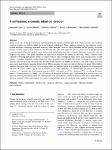Item Infomation
Full metadata record
| DC Field | Value | Language |
|---|---|---|
| dc.contributor.author | Gianpaolo, Coro | - |
| dc.contributor.author | Serena, Bardelli | - |
| dc.contributor.author | Armando, Cuttano | - |
| dc.date.accessioned | 2023-03-30T06:49:34Z | - |
| dc.date.available | 2023-03-30T06:49:34Z | - |
| dc.date.issued | 2023 | - |
| dc.identifier.uri | https://link.springer.com/article/10.1007/s00521-022-08129-w | - |
| dc.identifier.uri | https://dlib.phenikaa-uni.edu.vn/handle/PNK/7333 | - |
| dc.description | CC BY | vi |
| dc.description.abstract | Infant cry is one of the first distinctive and informative life signals observed after birth. Neonatologists and automatic assistive systems can analyse infant cry to early-detect pathologies. These analyses extensively use reference expert-curated databases containing annotated infant-cry audio samples. However, these databases are not publicly accessible because of their sensitive data. Moreover, the recorded data can under-represent specific phenomena or the operational conditions required by other medical teams. Additionally, building these databases requires significant investments that few hospitals can afford. This paper describes an open-source workflow for infant-cry detection, which identifies audio segments containing high-quality infant-cry samples with no other overlapping audio events (e.g. machine noise or adult speech). | vi |
| dc.language.iso | en | vi |
| dc.publisher | Springer | vi |
| dc.subject | Neonatologists | vi |
| dc.subject | automatic assistive systems | vi |
| dc.title | A self-training automatic infant-cry detector | vi |
| dc.type | Book | vi |
| Appears in Collections | ||
| OER - Công nghệ thông tin | ||
Files in This Item:

